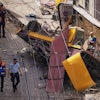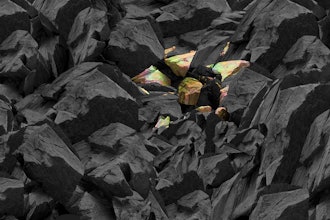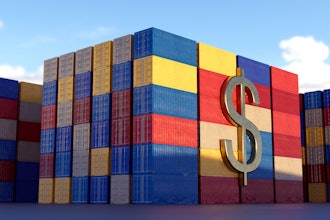Features
Podcasts & video
- Using genetics to save the ash tree, oil from algae
- Bat calls, weather balloons, telomeres and ageing
News
Montserrat volcano poses a constant danger
13 March 2013, by Harriet Jarlett
Montserrat's volcano is a threat to the island's inhabitants even when it is not erupting, say scientists.

New research has found evidence of previously unknown eruptions and landslide deposits. And some of the landslides occurred when the volcano was not considered to be erupting.
'It seems Montserrat was more active than we previously thought,' says Dr Jessica Trofimovs from Queensland University of Technology, who led the research.
The international team, which included researchers from NERC's National Oceanography Centre, mapped the volcano's eruption history by taking cores of sediment from the surrounding ocean, bringing together ten years of research into these sediment deposits.
The Soufriere Hills volcano in Montserrat has been erupting since 1995. In that time it has built a dome of lava so large that it regularly collapses, causing huge avalanches of hot rock and gas called pyroclastic flows.
The volcano is so unstable that large landslide events called mass flows, lead to the sides of the volcano falling into the ocean. By building the eruption history, the team showed these mass flows happened during times where they had thought the volcano was resting.
'We're seeing this evidence of two styles of instability. One associated with eruptions and another where the flanks of these islands go unstable and slump,' says Professor Stephen Sparks, co-author of the paper, from the University of Bristol.
Previous studies had mapped the volcano's history using material from eruptions which ended up on land. The current study went into more detail by examining the material from the volcano which finished underwater.

Clock tower in centre of Plymouth, Montserrat.
'75 per cent of erupted material ends up in the sea. On land, eruptions are buried or eroded away by the next eruption,' explains Trofimovs. 'But in the sea they form clear layers that we can date in order to get a good eruption history.'
'This expedition has given us a wonderful picture of the history of the volcano from the submarine record, which is more complete since every time there's an eruption, there is something deposited on the sea floor,' adds Sparks.
Rebuilding Montserrat
'People had thought the volcano might erupt for a few years, then sleep again for hundreds or thousands of years. If that had been case then the south of the island could be redeveloped, Plymouth could be rebuilt and the long term strategy for the island would be very different.'
Sparks continues, 'The problem with finding evidence for eruption pulses is that planning for the development of the island needs to take account of the high probability of further eruptions in the coming decades.
'Reoccupation and development of the south of the island does not seem an option for the foreseeable future.'
Professor Stephen Sparks - University of Bristol
The largest mass flow during the current eruption resulted in seven billion cubic feet (210 million cubic metres) of material racing into the sea – enough to fill the Royal Albert Hall twice. It resulted in a ten metre high tsunami along Montserrat's coastline.
These huge mass flows can happen during an eruption, but the study found they are often unrelated to volcanic activity.
'The volcano has been quiet for three years now, and if that continues and it goes back into a quiet phase maybe they can open up the south for tourism and get some economic benefit from it, but they need to live with the idea it may well erupt again,' Sparks says.
'It's important for future planning to consider tsunamis and landslides. They need to be added into risk assessments,' Trofimovs says.
'Reoccupation and development of the south of the island does not seem an option for the foreseeable future,' concludes Sparks.
Tsunnamis and landslides
Recently, there has been interest in the possibility of huge landslides occurring on other volcanic islands, which could result in devastating tsunamis, particularly at the Canary Islands.
'It's important for future planning to consider tsunamis and landslides. They need to be added into risk assessments.'
Dr Jessica Trofimovs Queensland University of Technology
This debate has centred on whether these landslides occur incrementally or in one go, with the entire side of the volcano falling into the sea at once – an event which could cause an extreme tsunami.
'What we've seen in Montserrat is evidence for both styles of collapse. We have evidence that the single units we see in the cores come from a landslide where the whole side of the mountain went in one go,' Trofimovs explains. 'But the largest deposit we have evidence for, the largest landslide we see, fell in stages.'
The study, published in Geochemistry, Geophysics, Geosystems identified the deposits of four landslides and six pyroclastic flows in the last 12,000 years from just one tenth of the five-metre-long cores that were recovered.
The interest in this work has led to an Integrated Ocean Drilling Program expedition which will take cores of 200m, enough to map Montserrat's eruption history for the past ten million years and to find out more about how and when these devastating landslides can occur.


















